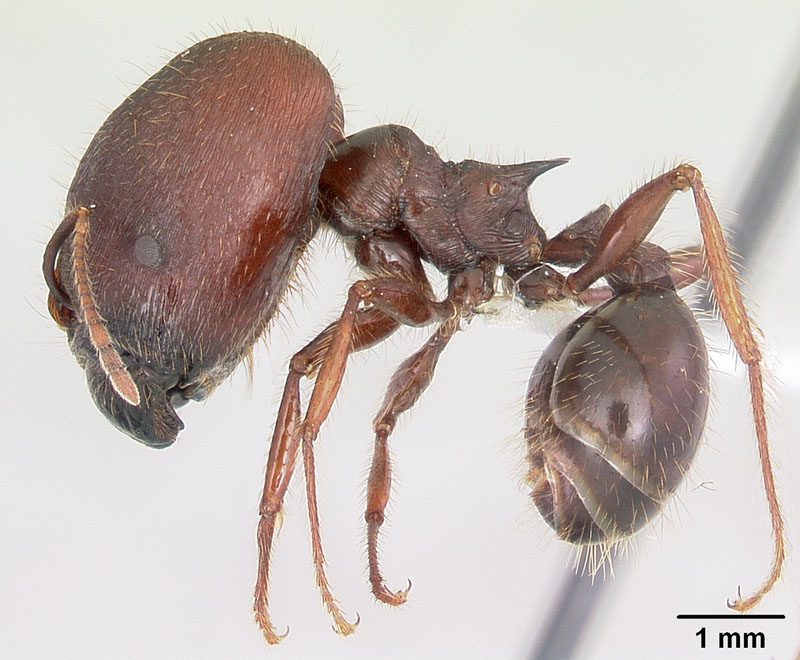
Thanks to SHmealer from formiculture.com for pointing out P. obtuspinosa and P. macclendoni, and to Leo from the same site for P. sinica.
Pheidole ants tend to be on the smaller side, with many of the species having majors that are less than 5 mm in total length. However, there are species that go counter to that trend, and finding out which ones was actually an interesting exercise.
Since total body length is seldom available, and a measurement that is actually hard to do, I decided I would use HW (head width) and HL (head length) of the majors (or supermajors, if they are available naturally for that species) as the deciding factors. By multiplying HW and HL I would get an idea of the theoretical dorsal surface area of the heads of the majors (assuming a rectangular shape) and use that for ranking the species.
In the list below, there is only one species with head surface area (HSA) greater than 15 mm2, one greater than 10 mm2, three with HSA greater than 7 mm2, another three with HSA greater than 6 mm2, and two with HSA greater than 5 mm2.
So, without much further ado, here are the largest Pheidole ants in the world, based on head dorsal surface area of the majors/supermajors.
Note: Most of the images below are from Antweb, with copyright attributions added in as captions.
THE FIFTEENERS
Species with super/majors whose head surface area (HSA) is above 15 mm2.
Pheidole rhea
HW 3.86 mm, HL 4.04 mm, HSA 15.6 mm2
Probably not exactly a surprise, but P. rhea is by far the largest Pheidole ant in the list. In fact, there’s not even any other species that is close in size to the super major of this ant.
As a comparison with other non-Pheidole ants, Carebara diversa super majors are about twice the HSA at 31 mm2, while Dinoponera gigantea (the largest ant overall) is around 38 mm2. Atta laevigata majors have head widths in the 7 mm range, although their heads are decidedly not rectangular.

THE TENERS
There is a single species with HSA greater than 10 mm2
Pheidole ocellata
HL 3.37 mm, HW 3.03 mm, HSA 10.2 mm2
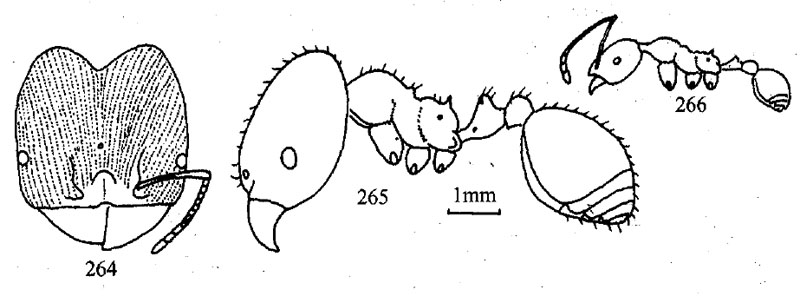
THE SEVENERS
There are three species with HSA greater than 7 mm2
Pheidole fimbriata
HW 2.60 mm, HL 2.8 mm, HSA 7.28 mm2
This species is the sister to all other Pheidole, according to several phylogenetic studies done of the group (Moreau, 2008). It can be found in the rainforests of the New World.
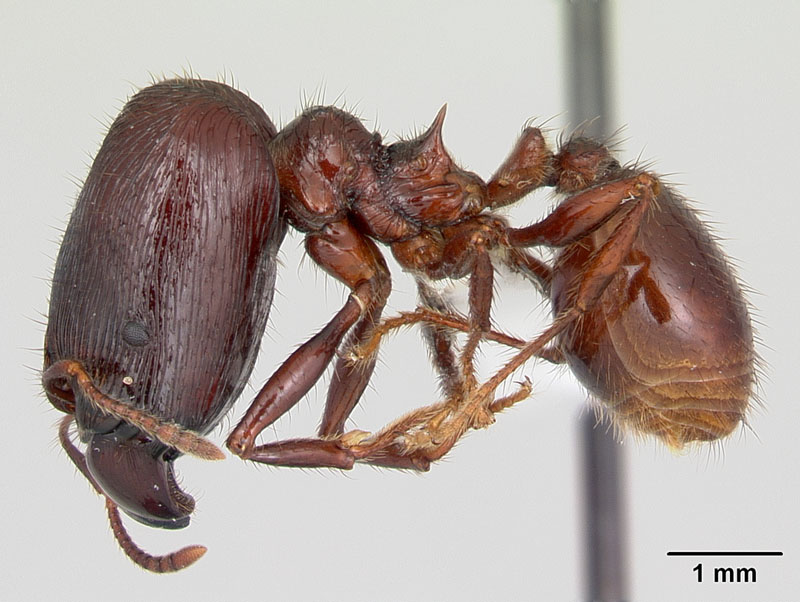
Pheidole macclendoni
HW 2.74 mm, HL 2.58mm, HSA 7.1 mm2
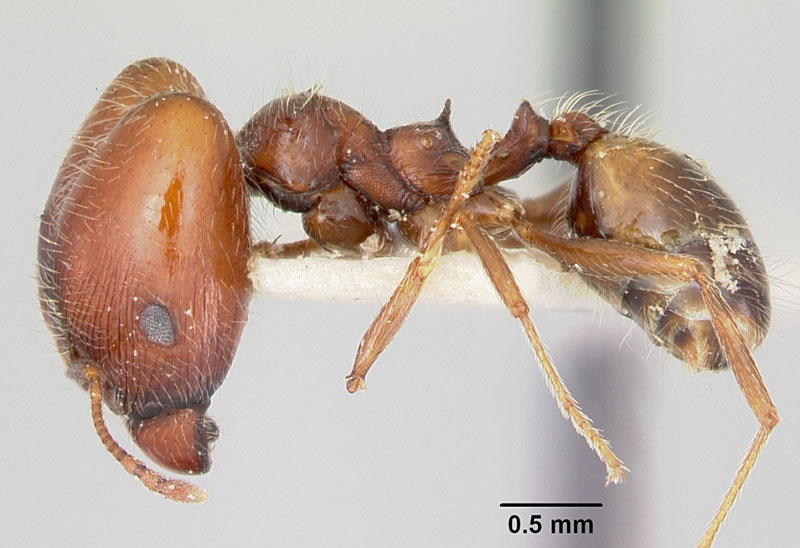
Pheidole sinica
HW 2.75 mm, HL of 2.67 mm, HSA 7.3 mm2
There is little information about this species that I can find to corroborate the measurements above, but in the interest of completeness will include it in the list. The numbers were taken from Wu and Wang, 1992.
THE SIXERS
There are three species with HSA greater than 6 mm2 in this list.
Pheidole militicida
HW 2.66 mm, HL 2.5 mm, HSA 6.65 mm2
This is one of the species that I’d love to see again. I once found a nest near Benson, AZ a long while back, but I was hunting for leafcutters at the time and had no photographs of them.
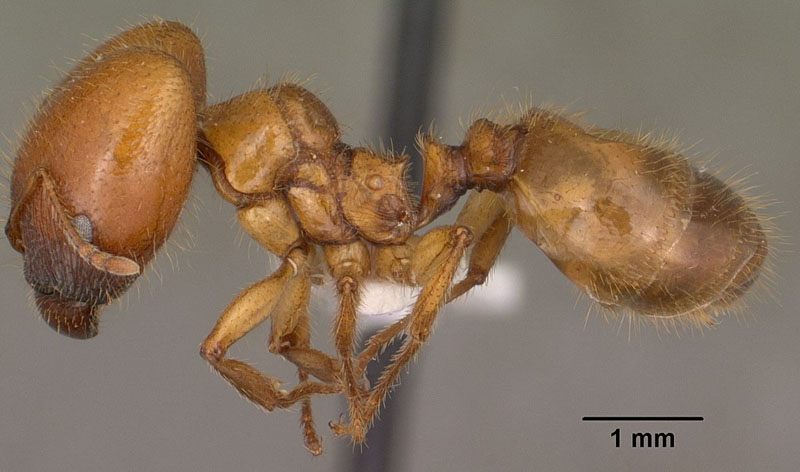
Pheidole praeusta
HW 2.34 mm, HL 2.78 mm, 6.5 mm2
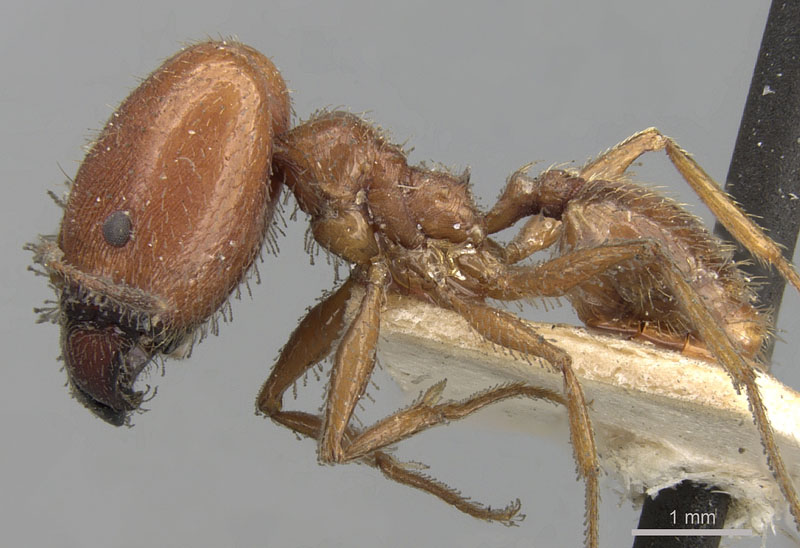
Pheidole astur
HW 2.34 mm, HL 2.66 mm, HSA 6.22 mm2
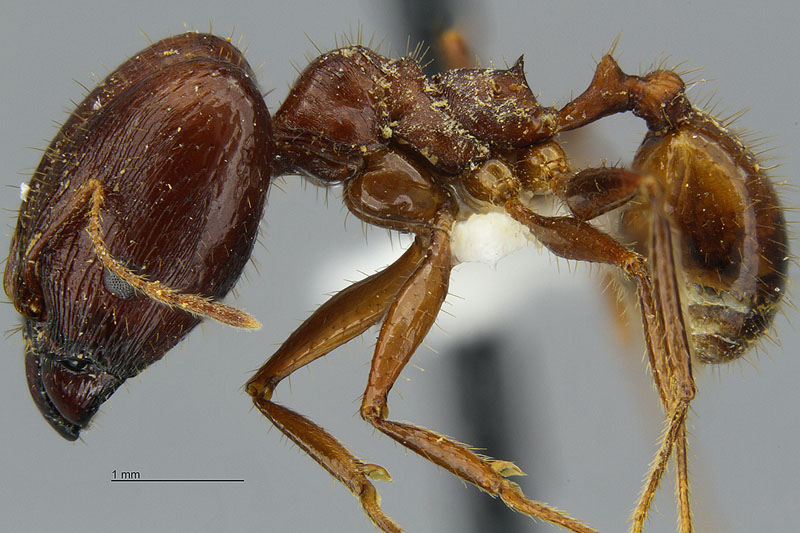
THE FIVERS
There are two species with HSA that are greater than 5 mm2
Pheidole obtusospinosa
HW 2.50 mm, HL 2.36 mm, HSA 5.9 mm2
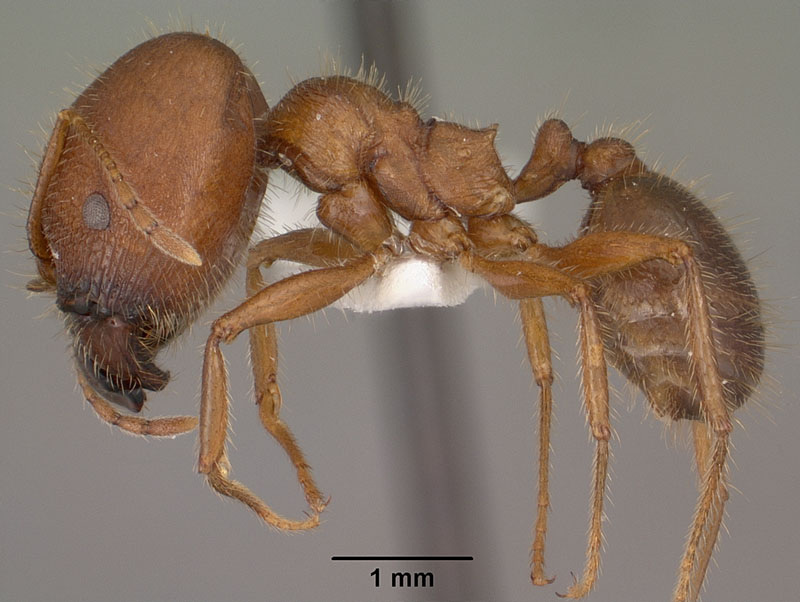
Pheidole trageri
HW 2.10 mm, HL 2.44 mm, HSA 5.12 mm2
This is one of those new species created by Wilson (2003) in his seminal work on the Pheidole. Its type locality is in Brazil, but not much is known about it.
So there you have it folks. The current list of largest Pheidole ants in the world.
I’m sure there are some other species that aren’t listed in one of the groups above, given that there are more than 1000 species in the genus, but I’ll be sure to add them in when I do find them.
Literature Cited
Moreau CS. Unraveling the evolutionary history of the hyperdiverse ant genus Pheidole (Hymenoptera: Formicidae). Mol Phylogenet Evol. 2008 Jul;48(1):224-39. doi: 10.1016/j.ympev.2008.02.020. Epub 2008 Feb 29. PMID: 18394929.
Leave a Reply